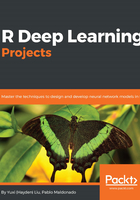
上QQ阅读APP看书,第一时间看更新
How is deep learning applied in self-driving cars?
A self-driving car (also called an autonomous/automated vehicle or driverless car) is a robotic vehicle that is capable of traveling between destinations and navigating without human intervention. To enable autonomy, self-driving cars detect and interpret environments using a variety of techniques such as radar, GPS and computer vision; and they then plan appropriate navigational paths to the desired destination.
In more detail, the following is how self-driving cars work in general:
- The software plans the routes based on the destination, traffic, and road information and starts the car
- A Light Detection and Ranging (LiDAR) sensor captures the surroundings in real time and creates a dynamic 3D map
- Sensors monitor lateral movement to calculate the car's position on the 3D map
- Radar systems exploit information on distances from other traffic participants, pedestrians, or obstacles
- Computer vision algorithms recognize traffic signs, traffic lights, and other landmarks from a camera and provide advance notices
- The algorithm-driven software analyzes all sensory data, combines inputs from other sources, and controls actions such as steering and braking, simulating the way humans perceive the surroundings and make decisions